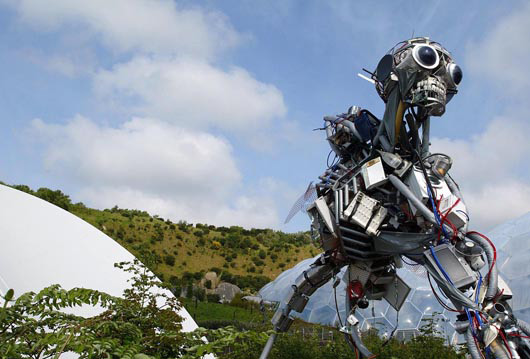About the WEEE Regulations & FAQ
The WEEE regulations

The WEEE Man found at the Eden Project, Cornwall
The Waste Electrical and Electronic Equipment (WEEE) Regulations (S.I. 2006:3289) and the WEEE (Amendment) Regulations 2007 (S.I. 3454) stem from an EU Directive of the same name. They came into full legal effect in the UK in July 2007 and have now been rolled out across all EU countries.
- The WEEE Regulations ensure electrical and electronic equipment (EEE) is recycled in a sustainable way when it reaches end of life.
- They are in place to reduce the impact electrical waste has on the environment by encouraging its reuse or recycling. It obliges manufacturers to fund the collection and recycling of their products when they reach end of life.
- The regulations require all producers to join a compliance scheme which manages the process on their behalf, and schemes such as Recolight – which works on behalf of the lighting industry.
- Under the Regulations the producer funds the collection, recycling and any environmentally friendly disposal. But it is the end user that has ultimate responsibility for making sure the product is recycled when it reaches end of life.





